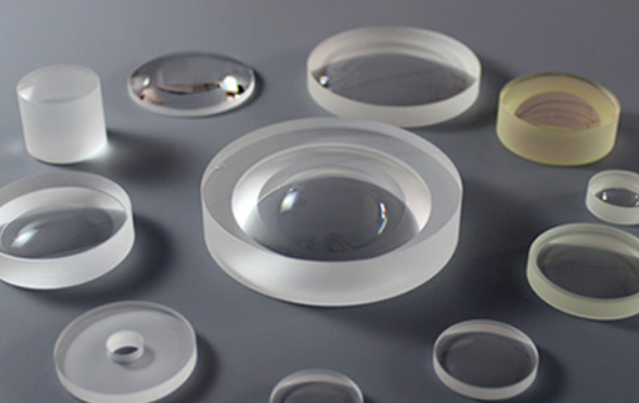Advantages of Using Meniscus Lenses in Infrared Applications
Jul. 03, 2023
Meniscus lenses are widely used in infrared (IR) applications due to their unique optical properties and advantages. These lenses are designed with a convex-concave shape, where one surface is convex and the other is concave. In this ne, I will discuss the advantages of using meniscus lenses in infrared applications in more than 600 words.
1. Correcting Aberrations:
Meniscus lenses are excellent for correcting aberrations, especially in IR imaging systems. They can minimize spherical aberration and coma, which are common in optical systems. By combining a convex and concave surface, meniscus lenses can control the wavefront shape and improve the overall image quality. This is crucial in IR applications where precise and high-resolution imaging is required.
2. Reduced Chromatic Aberration:
Chromatic aberration, caused by the dispersion of light, can significantly affect the quality of images in IR applications. Meniscus lenses, when designed properly, can minimize chromatic aberration by utilizing different refractive indices of materials. By selecting appropriate materials, meniscus lenses can provide improved color correction and reduce the presence of color fringes in IR images.
3. Increased Numerical Aperture (NA):
Numerical Aperture is a measure of the light-gathering ability of an optical system. Meniscus lenses can be designed with a high NA, allowing them to collect more light and increase the overall sensitivity of the IR system. This is particularly advantageous in low-light or long-range IR applications where maximizing the light collection is crucial.
4. Improved Field of View (FOV):
Meniscus lenses can provide an improved field of view in IR systems. By carefully designing the lens shape and curvature, meniscus lenses can achieve wider angles of view, allowing for a larger coverage area in the captured IR image. This is beneficial in surveillance, security, and panoramic imaging applications where a broader view is desired.
UV grade Fused Silica meniscus lenses from CLZ Optics
5. Compact and Lightweight Design:
Meniscus lenses can be designed with a thinner profile compared to other lens types, making them compact and lightweight. This is advantageous in IR systems where space and weight constraints are critical factors, such as in handheld devices, drones, or portable thermal imaging cameras. The compact design of meniscus lenses allows for more flexibility in the overall system design and integration.
6. Reduced Ghosting and Flare:
Ghosting and flare are unwanted optical phenomena that can degrade image quality in IR applications. Meniscus lenses, when coated with anti-reflection coatings, can minimize the reflections and stray light that cause ghosting and flare. These coatings reduce the light loss and increase the overall transmission efficiency, resulting in clearer and sharper IR images.
7. Customizable Design:
Meniscus lenses offer flexibility in design parameters, allowing for customization based on specific application requirements. The shape, curvature, and material selection can be tailored to achieve desired optical performance. This versatility makes meniscus lenses suitable for a wide range of IR applications, including thermal imaging, night vision, spectroscopy, and medical diagnostics.
8. Thermal Stability:
Infrared applications often involve exposure to high temperatures, especially in industrial or scientific environments. Meniscus lenses can be manufactured using materials with excellent thermal stability, such as germanium or chalcogenide glasses, which can withstand elevated temperatures without significant optical performance degradation. This makes meniscus lenses suitable for demanding IR applications that require prolonged operation in harsh environments.
9. Cost-Effective Solution:
Meniscus lenses provide a cost-effective solution for IR imaging systems. They can be manufactured using a variety of materials, including relatively affordable options such as optical glasses or plastics. Compared to more complex lens designs, meniscus lenses offer a simpler and more cost-efficient optical solution without compromising on performance.
10. Versatile Wavelength Range:
Meniscus lenses can be designed and optimized for various wavelength ranges within the IR spectrum, including near-infrared (NIR), short-wave infrared (SWIR), mid-wave infrared (MWIR), and long-wave infrared (LWIR). This versatility allows meniscus lenses to be used in a wide range of applications that require different IR wavelengths, such as thermal imaging, spectroscopy, or remote sensing.
Conclusion
Meniscus lenses offer several advantages for infrared applications. They provide excellent aberration correction, reduced chromatic aberration, increased numerical aperture, and improved field of view. Their compact and lightweight design, along with reduced ghosting and flare, makes them suitable for diverse IR systems. Meniscus lenses can be customized, exhibit thermal stability, and offer a cost-effective optical solution. Their versatility in accommodating various wavelength ranges further expands their application potential in IR imaging systems.
If you want to know more information about Meniscus lenses, please contact us. We will provide professional answers.



















